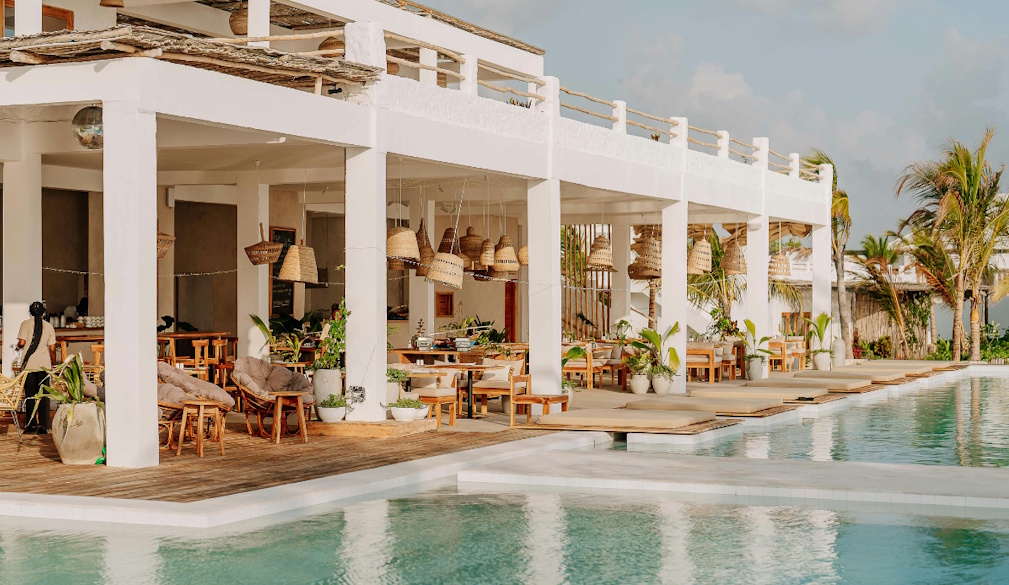The North of the Murray Event Series
- Written by The Times

This summer, Federation Council will host a series of community events that will shine a spotlight on the North of the Murray Region like never before. The North of the Murray Event Series will encompass five vibrant gatherings across four towns in the region, taking place from December 2023 to February 2024.
Nestled on the border of New South Wales and Victoria, the North of the Murray Region boasts breathtaking natural beauty, dynamic watersports, and a rich agricultural history. In recent years, the communities along the Murray River have faced significant challenges, including the impacts of COVID-19 restrictions and devastating floods that left homes, farmland, local businesses, and tourism in turmoil.
Working in partnership with local community organisations the objective of The North of the Murray Event Series, a NSW State Government-funded initiative, is to reinvigorate local communities and businesses. The exciting series will extend its warm embrace to residents and visitors alike to stimulate the local economy and revive tourism with a fun program of summer entertainment.
All events within the series are free to the community and will feature an array of offerings, including food and market stalls, light installations, live music, children's activities, and much more.
Federation Council Mayor, Cr Patrick Bourke expressed his enthusiasm for the upcoming event series.
"Excitement is building as we prepare to light up the North of the Murray Region this summer with an incredible lineup of community events in Corowa, Howlong, Urana and Mulwala,” he said.
“These events would not be possible without the incredible involvement from community groups and businesses across our region, and the funding provided by the NSW State Government's Reconnecting Regional NSW - Community Events Program. Our shared vision is to bring people together in celebration, fostering a sense of unity and joy that will shine bright throughout the summer season."
The North of the Murray Event Series has been developed in consultation and will be delivered with the support of the Corowa Business Chamber, Howlong Community Progress Association, Urana Progress Association, Waterfront Pavilion Urana, Mulwala Water Ski Club, Mulwala Progress Association and Yarrawonga Mulwala Tourism.
NORTH OF THE MURRAY EVENT SERIES:
Light Up Corowa:
Kicking off the series is Light Up Corowa on Friday, 1st December, at Bangarang Park. This event promises to transform Corowa into a magical wonderland with lighting installations, markets, delectable food stalls, and a Christmas carol concert hosted by charismatic MC, Steve Bowen. Light Up Corowa is set to create unforgettable memories for families and friends to launch the festivities of the event series. Market and food stalls will commence from 5pm, with a Christmas carols concert running 6:30pm to 8:30pm.
Rock On The River:
Rock On The River will be held on Saturday 2nd December at Rowers Park, Corowa from 4pm until 8pm, where a mix of upbeat and mellow rock music will set the vibe for a festive and fun evening by the riverside. Headlined by award winning artist Benny Walker and featuring food trucks, children’s activities and a mix of local music acts, this is one on the summer calendar not to be missed. Bring your family and friends, a picnic blanket, and rock the night away.
Howlong Twilight Christmas Festival:
On Saturday, 16th December, Lowe Square will host the Howlong Twilight Christmas Festival. Markets will include a lineup of handmade artisan craft stalls, children’s activities, free amusement rides and a hot rod display. Hosted by Rodney Vinvent the evening’s program will feature Christmas carols, a nativity play, performance by Empower Dance Academy, a visit from Santa Clause and more. The markets and food stalls will be starting from 3pm, with the carols kicking off from 7pm and going till 9pm.
Mulwala Family Fun Day:
The shores of Lake Mulwala will come alive on Saturday, 27th January, at Mulwala Water Ski Club’s Family Fun Day. Gates open at 12.30pm til 9.30pm. Featuring free kids rides 1pm to 6pm, music, delectable food, a water ski show, laser light show and more. There will be something for everyone to enjoy at Mulwala Family Fun Day!
Urana Flame N Feast:
Urana Flame N Feast is happening Saturday, 3rd February, at the Urana Aquatic and Leisure Centre. This culinary extravaganza will showcase a variety of meat prepared by local and acclaimed BBQ pitmasters, highlighting the finest Aussie produce. Entertainment, amusement rides, and local beer from regional breweries will add to the day's festivities. A top celeb chef will also make an appearance to be a guest judge for a friendly competition among BBQ trucks, where the community can participate in voting for the best BBQ dish of the day.
For more information and updates on The North of the Murray Event Series please visit www.northofthemurray.com.au or www.federationcouncil.nsw.gov.
About Federation Council:
Federation Council is home to thriving and diverse communities of Corowa, Howlong, Mulwala, Oaklands, Urana, Balldale, Boree Creek, Buraja-Lowesdale, Coreen, Daysdale, Morundah, Rand, Rennie and Savernake.
Located within an agriculturally rich and diverse area on the border of New South Wales and Victoria, the Southern Riverina region is the centre of one of the most productive wool, grain, lamb and beef-cattle growing areas of Australia.
Only three hours from Melbourne, four hours from Canberra and six hours from Sydney, the region boasts a great climate and vibrant atmosphere and is an ideal location for families, businesses and visitors to experience its exceptional lifestyle and opportunities. The North Of The Murray series, commissioned by the Federation Council, has a mission to reinvigorate local businesses and tourism activity across the LGA and wider region.














